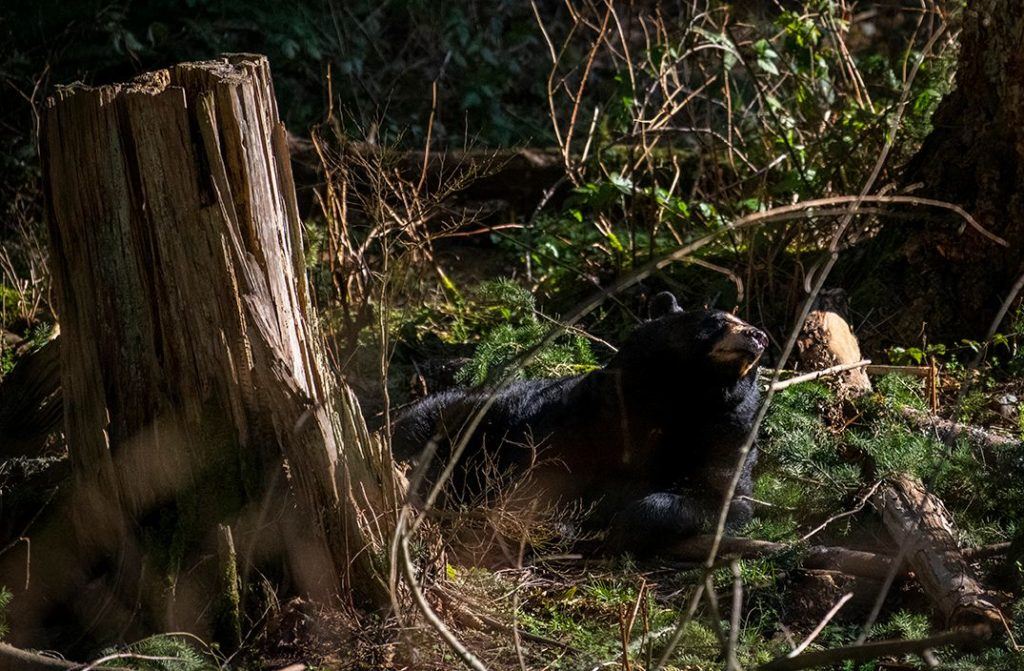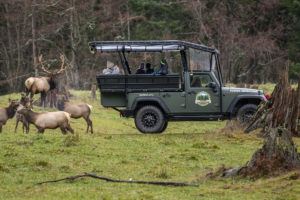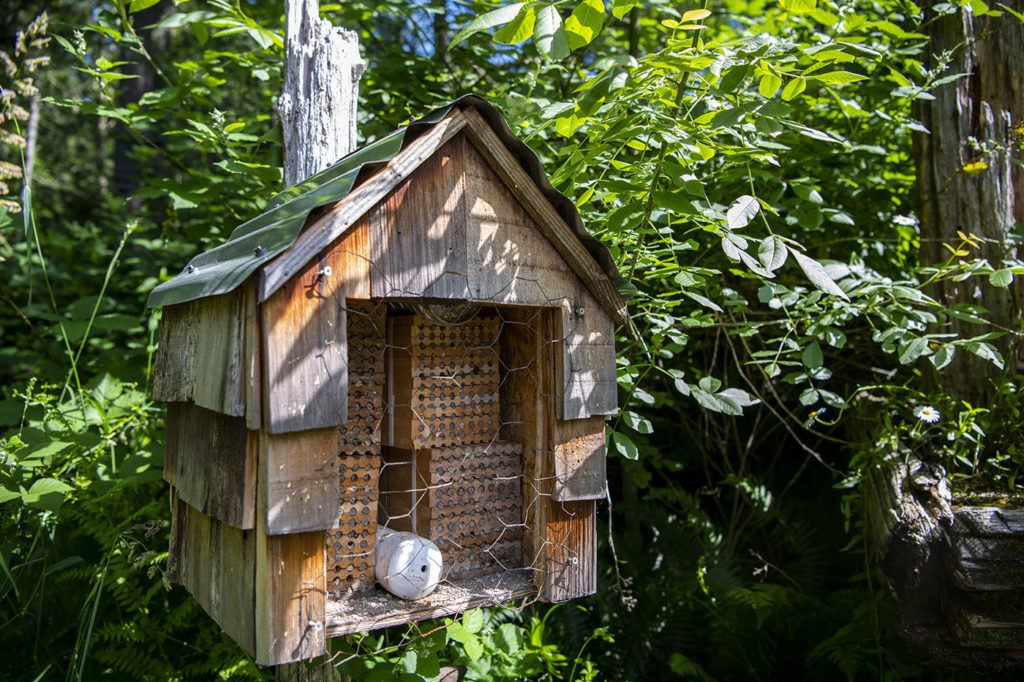Northwest Trek will be open daily for spring breaks and there will be plenty to see and do! Both wild animals and the animals at Northwest Trek become much more active in spring as it warms up and plants grow and natural food sources become more abundant.
Active Bears
The black bears at Northwest Trek are slowly waking up from torpor, a state in which a bear’s body temperature, respiratory rate and metabolic rates all decrease to conserve energy. The bears had little activity outside of their dens over the last few months, including eating. The grizzly bears went into partial torpor this winter, slowing down but still active at times, most likely because of their young age. They are still learning how and when to create successful denning sites, and are expected to take longer winter naps in future years. Both the black bears and grizzly bears seem to be getting their full energy back and will be viewable over spring breaks.

If you plan to hike or camp this spring or summer, be sure to be “bear aware.” Black bears are a top native Washington predator, and are excellent foragers. As bears in the wild wake up from their winter naps, they’ll be searching for food. They’ll eat plants, fruit, nuts, insects, honey, salmon and small mammals. But, if your picnic basket or camping gear is left unattended and with easy access, you could come face-to-face with a black bear. When you’re enjoying yourself in bear country, make sure to protect yourself and the bears with these tips:
- Look for signs of recent bear activity like scattered trash, fresh tracks or scat or clawed trees.
- Choose a site well away from obvious wildlife trails, stream banks or lake shores, and food sources like berry bushes.
- Set up your cooking area at least 100 yards from your sleeping area.
- Never keep food or other scented things in your tent.
- Store all food in a bear-proof container or hung from a tree at least 10 feet off the ground and 4 feet from the trunk.
- Don’t burn citronella items near your campsite- bears love the smell.
Take a Wild Drive or Keeper Adventure Tour
 If you’ve been wanting to get outside and go for a road trip, now’s the time! Hop in your personal vehicle and experience a Wild Drive through the park’s 435-acre Free-Roaming area past bison, mountain goats, Roosevelt elk, black-tailed deer, swans, moose, caribou and bighorn sheep. Or, go off-road in a Jeep on a Keeper Adventure Tour! Both experiences are educational too. You’ll learn from a naturalist or keeper about the species you’re seeing and what makes them special. Plus, not only will you see all of the animals enjoying the spring weather, you’ll travel through serene meadows, shady wetlands and dappled forest… ahhh, can you smell that fresh, forest spring air already?
If you’ve been wanting to get outside and go for a road trip, now’s the time! Hop in your personal vehicle and experience a Wild Drive through the park’s 435-acre Free-Roaming area past bison, mountain goats, Roosevelt elk, black-tailed deer, swans, moose, caribou and bighorn sheep. Or, go off-road in a Jeep on a Keeper Adventure Tour! Both experiences are educational too. You’ll learn from a naturalist or keeper about the species you’re seeing and what makes them special. Plus, not only will you see all of the animals enjoying the spring weather, you’ll travel through serene meadows, shady wetlands and dappled forest… ahhh, can you smell that fresh, forest spring air already?
Get the Wiggles Out at Kids’ Trek
Spring Break means it’s time to PLAY! Bring your family and reconnect with fun at our nature-inspired playground with ropes, slides, sand, play-cabins and a giant play-tree. Hang like a spider in a rope net, climb down a “tree trunk” or walk the rope bridge to hide inside the giant stump. Kids from toddlers to tweens will love Kids’ Trek, and it will inspire them to get active in nature. The playground is free with park admission and open whenever the park is open.

Visit the Mason Bee “Hotel”
Northwest Trek’s lead naturalist has spent hours cleaning the park’s mason bee “hotel”, a process of cleaning tunnels, sorting cocoons and removing predators that ensures our native pollinator bees have the best chance of a healthy, productive spring. Bees are one of the few pollinators this early in the season, and cleaning their house protects them from mold, mites and wasps and gives them a better chance at survival. In total, Northwest Trek’s mason bee hotel, which is located near the picnic pavilion complete with its own rooftop bee food garden, produces a few thousand cocoons, and more every year. The bees will emerge for the season, ready to eat, mate and pollinate when the temperature is just right: hitting 55 degrees several days in a row. Come view the hotel and get inspiration for how you can help bees at home! You can plant native plants (especially early-flowering ones), avoid pesticides and herbicides in your yard, and leave a certain amount of old wood and debris out wildlife habitat. Find more information about pollinator gardening you can do this spring here.
